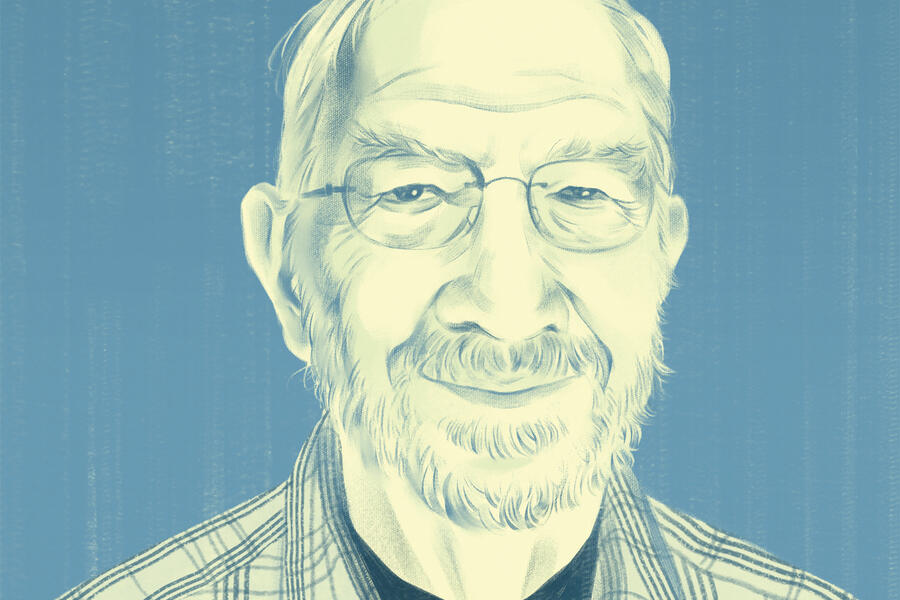More than 7 million Americans are living with Alzheimer's disease, the most common form of dementia. As the population ages, that number is expected to rise dramatically. By 2050, close to 13 million people over the age of 65 may be living with the disease unless major breakthroughs in prevention or treatment emerge.
The challenges for caregivers of people with dementia—who must deal not only with logistics but also with grief, guilt, frustration, and isolation—can be overwhelming.
In 1981, Peter Rabins, then assistant professor of psychiatry and behavioral sciences at the Johns Hopkins School of Medicine, sought to ease the burden on caregivers by co-authoring The 36-Hour Day, a guide that offers practical solutions and reassurance to families as they navigate the complexities of caring for a loved one with Alzheimer's or another form of dementia.
Now in its eighth edition, the book has sold more than 4 million copies worldwide. Here, Rabins, MD, MPH, professor emeritus in the departments of Psychiatry and Behavioral Sciences and of Medicine, reflects on what's changed in dementia care, what hasn't, and why the book continues to resonate with caregivers more than four decades later.
This is the eighth edition of The 36-Hour Day. What has necessitated revised editions over the years?
One aspect of the book that has been consistently helpful to people is its wealth of practical advice on managing specific problems. The knowledge base for doing that has expanded significantly over the past 40 or 50 years. There are new technologies, for instance—tracking devices like AirTags or GPS-enabled phones—that help prevent someone from getting lost.
Beyond technology, there have been many societal shifts relevant to dementia care. For instance, assisted living facilities were virtually nonexistent when the book was first published in 1981. Today, caregiving options have expanded to include assisted living and continuing care communities. We help readers navigate these options and explain their benefits and drawbacks.
What breakthroughs have occurred in diagnosis and treatment of Alzheimer's and other dementias since the seventh edition's publication in 2021?
We've seen dramatic changes in how dementia is diagnosed. There are now PET scans, spinal fluid tests, and FDA-approved blood tests that can detect the abnormal proteins associated with Alzheimer's. It used to be that diagnosis was based almost entirely on clinical evaluation and ruling out other causes of thinking and memory problems with bloodwork and brain scans. That's still critical, but now we can supplement it with biological data, which is exciting.
There are also two new medicines that remove one of the abnormal proteins from the brain in people with Alzheimer's disease. We've had medications since the mid-1990s that helped improve memory somewhat, but they didn't change the basic biology of the disease. We don't yet know if they truly change the course of Alzheimer's or just help a little for a little while. I'm optimistic long term, but we're still at an early stage.
We've added a section about those medicines. What are their side effects? What are the challenges in taking them? What are the potential benefits?
The book has always emphasized the importance of trying not to correct or scold people with memory issues. How has that approach evolved?
One of our core philosophies is that we meet people with dementia where they are, rather than trying to force them back into our reality. That principle has been part of the book since the first edition, and over time, it's only deepened in relevance. There's now broader recognition that compassion and flexibility are essential, especially when communication becomes difficult. You can't always reason your way through a situation, but you can connect emotionally. The exact content of what you're talking about is less important than the fact that you're interacting with the person.
Given the recent federal funding cuts, do you worry about the future of dementia research?
I think it's a little too early to know for sure what the impact is going to be, but progress depends on a diversity of ideas, and you never know where the next breakthrough will come from. It's a serious enough public health issue that I think it deserves a big focus in funding. Already, some studies have been closed down because the funding was stopped. To me, that's sad, but I don't think anyone knows yet how that's going to play out over the next few years. There's certainly the potential for harming progress and delaying it significantly.
Finally, why do you think The 36-Hour Day has remained so popular?
The book came out at a time when there was very little known about this group of diseases. We were seeing so many families struggling, with very little guidance available. To me, the biggest reason it's helpful is that it's very practical. It helps people who are struggling with problems address them. We emphasize the idea that it's a lot of trial and error and common sense. So if you try something that doesn't work, then here's another thing to try. We also emphasized the importance of caregiver self-care early on. That was somewhat ahead of its time in 1981, but we've always believed that helping the caregiver is key to helping the person [with memory issues].








